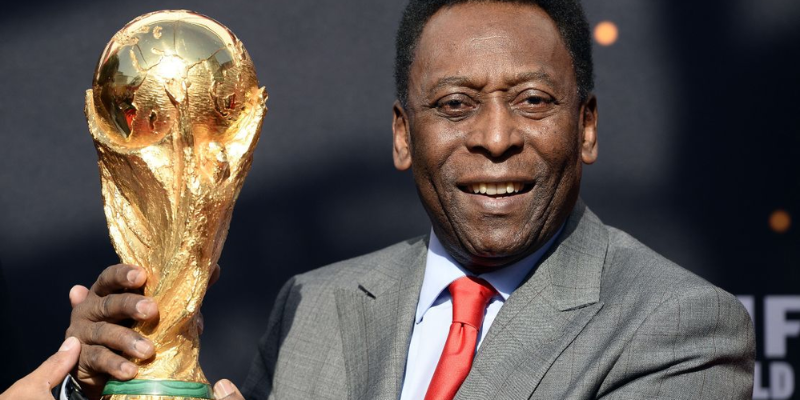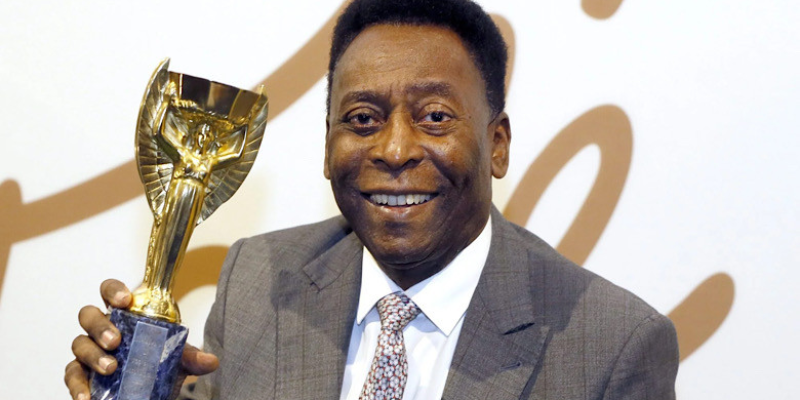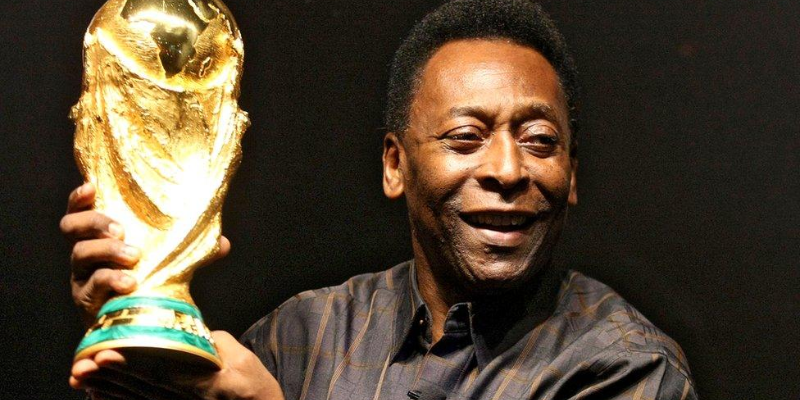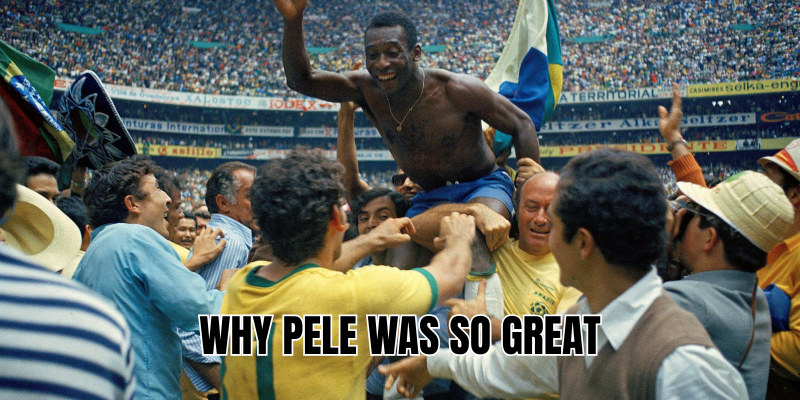Why Pele was so great became a question asked by fans, pundits, and historians alike. In this article, AnaGoal will accompany you on a journey through his life, statistics, style, impact, and legacy to uncover exactly what made Pelé not just a legend, but the benchmark in football history.
Early Life and Rise to Stardom

Born Edson Arantes do Nascimento on October 23, 1940, in Três Corações, Brazil, Pelé’s journey began in modest surroundings. His father, known as “Dondinho,” was himself a footballer, and from a young age Pelé chased the ball with uncanny hunger. He earned his nickname “Pelé” in childhood — a moniker whose meaning he later admitted he didn’t fully understand — but which soon would resonate in every corner of the world.
At age 15, Pelé joined the youth ranks of Santos FC. A year later, he made his professional debut. By 16, he had earned his first cap for Brazil. It was 1958, however, that changed everything: at just 17 years old, Pelé starred in the World Cup, scoring a hat-trick in the semifinal and two goals in the final — and delivering Brazil its first World Cup trophy. He became the youngest player ever to win a World Cup and forever marked his name in the history books.
This meteoric rise foreshadowed just how unique his trajectory would be — he was no ordinary youngster breaking through, but a phenomenon in real time.
Statistical Mastery and Records
In any discussion of why Pelé was so great, statistics are often the irrefutable foundation — his numbers are staggering even by modern standards.
- FIFA and other sources credit him with 1,279 goals in 1,363 games (including friendlies) across his career.
- In official matches, he scored 757 goals in 831 games for club and country, which is itself extraordinary.
- He remains the all-time leading goalscorer for Santos: 643 goals in 659 competitive matches.
- Internationally, he tallied 77 goals in 92 appearances for Brazil, a record that held until Neymar eclipsed it in 2023.
- He is the only man to win three FIFA World Cups (1958, 1962, 1970).
- In the 1959 calendar year, he scored 127 goals, a record for goals in one year (counting all matches).
- Pelé recorded 129 hat-tricks in his career, one of the highest numbers in all of football.
These figures alone explain much — but they don’t fully convey how he used those numbers with style, variation, and flair.
Style of Play: Versatility, Technique & Vision

If markers of greatness are versatility, creativity, and impact beyond raw numbers, Pelé stood tall among all.
Two-Footed Brilliance and Finishing
Pelé could strike the ball with either foot — a quality far rarer in his era than today. This asymmetry made him unpredictable, dangerous, and hard to mark. His shooting ranged.
Aerial Mastery
Although not extraordinarily tall, Pelé’s timing, leap, and heading technique were elite. He scored many headers and was a constant threat in the air — adding another dimension to his game.
Dribbling, Feints & “Joga Bonito”
Pelé embodied the phrase joga bonito — the “beautiful game.” His dribbling combined speed, balance, feints, feints-of-feints, and sudden changes of direction. He had a signature move known as the drible da vaca (“cow dribble”) and often used the paradinha (a quick pause) to wrong-foot defenders.
Playmaking & Assists
He wasn’t just a pure goalscorer. With high football IQ, vision, and passing skill, Pelé often dropped dee, he contributed so much in link-up play that many goals started.
Tactical Intelligence & Positioning
Pelé had a rare anticipation of defenders’ movements, spaces, and timing. This allowed him to exploit gaps, make bursts into channels, and create overloads. Later in his career, he sometimes operated as a supporting forward or attacking midfielder — adapting his role to prolong effectiveness.
All this made Pelé a complete player: scorer, creator, athlete, and leader.
Tournament Triumphs & Career Moments
Numbers are powerful, but some moments elevate legend beyond metrics. Here are a few iconic chapters:
- 1958 World Cup (Sweden): At age 17, Pelé lit up the tournament. He scored a hat-trick vs. France in the semifinal, then two goals in the final as Brazil crushed Sweden 5–2.
- 1962 World Cup (Chile): After an injury mid-tournament, Pelé’s presence was limited, but Brazil still lifted the trophy — the only time he was part of a World Cup squad without playing in all matches but still winning the title.
- 1970 World Cup (Mexico): Widely regarded as his masterpiece. In a tournament watched globally, Pelé led a Brazilian team many call the greatest ever. He scored 4 goals and added 6 assists, directly influencing over half of Brazil’s total goals. The final — in which Brazil defeated Italy 4–1 — sealed his status as a global icon of football.
- Club Success with Santos: Pelé played a central part in Santos’ golden era: multiple state titles (Campeonato Paulista), national championships, Copa Libertadores wins (1962, 1963), and intercontinental triumphs.
- New York Cosmos & Legacy Moves: In the twilight of his career (1975–77), Pelé helped raise the profile of football (soccer) in the U.S. with the Cosmos. His presence globally raised the game’s awareness.
These moments combined spectacle, consistency, and clutch impact — helping define why Pele was so great beyond mere stats.
Character, Influence & Cultural Legacy
On the pitch, Pelé enthralled. Off it, he inspired.
Global Ambassador & Symbol
He carried football to places where it had little exposure, toured the globe, and became a symbol of hope — especially in Brazil, where his rise. His influence transcended sport: he became a living icon of Brazil itself.
Social Impact & Representation
Pelé was a black athlete rising to global stardom during times of racial and social inequality. He pioneered representation: a Black man was now the face of global football. His voice, actions, and presence offered inspiration for marginalized communities.
Consistency & Humility
Despite immense fame, Pelé often presented himself with humility. He spoke generously about gratitude, pride for his country, and love for the sport. He embraced his role as an ambassador — in governance, charity, youth development, and global diplomacy.
Longevity & Relevance
Long after retirement, Pelé remained central in conversations, endorsements, exhibitions, and honours. Awards such as “Athlete of the Century” and inclusion in all-time dream teams testify to lasting respect.
In short, Pelé was not only a footballer — he was a cultural force whose ripples influence generations.
Criticisms, Context & Modern Comparisons

It’s meaningful to evaluate critical perspectives too — part of understanding how greatness is measured.
- Era Differences: Some argue Pelé played in eras with less physical defense, fewer travel strains, or looser marking rules.
- Limited footage: Many of his greatest goals were never recorded or preserved, leading to a partial visual legacy.
- Official vs. Friendly goals: His enormous goal counts include friendlies and tour games; critics sometimes downplay those.
- Comparisons with Messi/Ronaldo: In modern debates, fans measure Pelé against contemporary stars. But the different conditions, athleticism, equipment, and league structures complicate any direct formula.
Yet even with these caveats, the weight of his achievements — trophies, influence, consistency, charisma — withstands critical reappraisal. His contemporaries often praised him as “the most complete player I ever saw.”
Thus, when we ask why Pele was so great, we must view legacy beyond numbers — in how he shaped football’s identity.
Legacy and Enduring Impact
Pelé’s standards became a template for greatness. His influence shows up in multiple ways:
- Every player wearing the number 10 — from Maradona to Messi to Neymar — traces heritage to Pelé’s artistry.
- Football culture adopted joga bonito as an ethos, linking flair and joy with success.
- Records he set still stand or only recently fell (e.g. Brazil top scorer record).
- He filtered into museum exhibits, documentaries, books, films — building myth while grounding it in reality.
- The global expansion of football, especially in the U.S., owes some of its roots to his New York era.
Pelé set a bar: technical excellence, moral presence, global reach. Many great players came after — but few carried the holistic legacy he did.
Conclusion
Why Pele was so great is a question with many layers — from jaw-dropping numbers to transcendent moments,, he was complete: a scorer, a creator, a leader, and a symbol for millions.
As you reflect on Pelé today, know that his greatness still resonates — in every flick, every number 10, every child inspired by the ball. If you enjoyed this deep dive, stay with AnaGoal for more stories, analysis, and unsung insights from football’s legends and rising stars.



